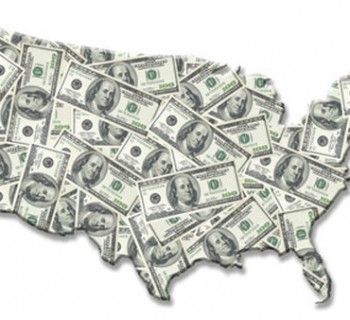 Who wouldn’t like their funds to go further? From increasing savings to paying down debt, additional cash flow can be a real game-changer. Unfortunately, the recent elevated levels of unemployment, combined with minimal wage increases for many working Americans, have made it more challenging than ever to increase savings.
Who wouldn’t like their funds to go further? From increasing savings to paying down debt, additional cash flow can be a real game-changer. Unfortunately, the recent elevated levels of unemployment, combined with minimal wage increases for many working Americans, have made it more challenging than ever to increase savings.
In fact, according to the Bureau of Economic Analysis, the latest national personal saving rate — defined as personal saving as a percentage of disposable personal income — was a meager 3.4 percent.
Since personal saving is based on the difference between income and expenses, savers should consider addressing the one area they actually can control — expenses. Through proper planning, strategies geared toward stretching your dollar may help maximize cash flow and improve savings.
BUDGET AWARENESS
The first step in the process is to carefully monitor your spending and create a detailed budget. Remember, there is no way to know what you can save if you don’t even know what you spend.
While pen and paper are sufficient for producing your budget, budgeting tools found at sites like Bankrate.com and Mint.com can help.
Begin by listing your current expenses and income to determine if there are any leftover funds each month. Once you establish your budget and determine your household break-even point, Quicken.com and apps such as Mint can simplify the ongoing expense-monitoring process to help you identify unnecessary expenses that could be reduced while holding you accountable to your goal.
Next, consider objectively assessing your ability as a consumer. Believe it or not, one of the most overlooked financial skills is the ability to be a smart spender. The best companies in the world understand this and employ purchasing managers with the sole responsibility of approving the purchase of goods and services at the best price possible. Are you an effective purchasing manager for your household?
The first rule of buying is: Know that everything is negotiable. From purchasing an automobile or a home to insurances, banking and phone/cable services, negotiating and shopping alternatives can lead to substantial savings. Businesses periodically send their vendors a request for proposal to see if there are cost-effective alternatives that would lead to savings. Consider approaching the expenses listed in your budget the same way, and systematically review alternatives that can save you money in the long run.
CONTRARIAN APPROACH
In addition, buying things out-of-season may help reduce many costs by 30 to 50 percent. From purchasing winter clothes in the spring and summer clothes in the fall to hiring a contractor out-of-season or buying an automobile left over from last year, using a contrarian approach to spending can free up additional cash. For example, how many snow blowers were on sale after the snowless winter we had? Simply put — avoid purchasing when everyone else is and take advantage of the savings.
Being a smart spender also means cutting out unnecessary costs and prioritizing the expenses that are most important. Keep in mind that you can live on a budget and still enjoy life. For example, if you have children, consider reviewing “50 Free or Cheap Things to Do With Kids” by Cameron Huddleston of Kiplinger.com for affordable ideas to keep your children entertained during the summer. The point is that enjoyment does not always have to be expensive. Looking for cost-effective alternatives can also free up cash that can be applied toward other goals and objectives.
AUTOMATE SAVINGS
Once you have established your budget, cut unnecessary expenses and discovered “found money” in your cash flow, consider putting your savings plan on autopilot. Why add another item to your list of things to remember? Consider establishing automatic contributions to a separate cash reserve account, IRA, or 401(k). Treat your savings like any other expense, and build your budget around your savings goals. Paying yourself first will pay off in the long run.
It is always important to focus on what you can control, and mastering the little things like budgeting and being a smart consumer can have a huge impact on future financial success. Consider getting started right away on developing a plan to increase your savings rate. Since everyone’s situation is unique, consider speaking to your financial adviser to determine the most appropriate plan for you.
Kurt J. Rossi, MBA, is a Certified Financial Planner Practitioner. He can be reached for questions at (732) 280-7550 or kurt.rossi@Independentwm.com. LPL Financial Member FINRA/SIPC.









